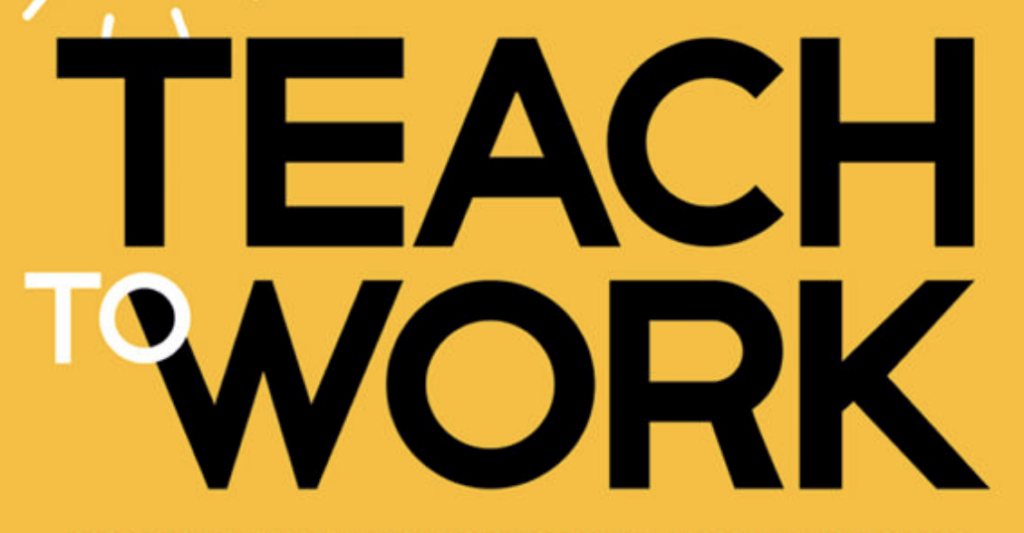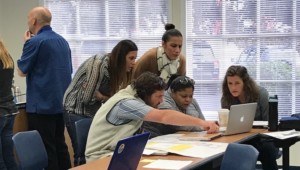Mentors Enhance Project-Based Learning

Extended community-connected projects offer at least seven benefits to students:
- Big multistep projects teach the practical skills of project management.
- Challenging projects build the habits of persistence (sometimes called grit) and self-direction.
- If they include some degree of voice and choice, projects build ownership and motivation (with self-direction, these dispositions are often called agency).
- Integrated challenges teach critical-thinking and problem-solving skills. Problems with no easy answer build design skills.
- Team projects develop social awareness and collaboration skills.
- Projects often conclude with written and oral reports that build communication skills across the disciplines (e.g. writing about science).
- Well designed projects conclude in a public product that may make a community contribution and allow young people to experience the benefits of service.
Patty Alper adds an eighth benefit. She wants every kid to have a mentor and thinks projects are the right place to connect.
Alper explains the role of a project-based mentor in her book, Teach to Work: How a Mentor, a Mentee, and a Project Can Close the Skills Gap in America.
Alper is a board member of the Network for Teaching Entrepreneurship (NFTE) where she discovered active learning and power of mentoring.
The opening chapter includes interviews with five companies all looking for employee engagement-willing experts that could support student projects. Mentorship provides reciprocal benefits to mentors and companies. Executives get a chance to give back and companies build the workforce pipeline.
How and Where Mentors Can Support Projects
The Framework for High Quality Project Based Learning (above) articulates six criteria for high quality student experiences. Mentors can play a role in enhancing each of these six areas.
| HQPBL Criteria | Potential Mentor Roles |
| Intellectual Challenge and Accomplishment |
|
| Authenticity |
|
| Public Product |
|
| Collaboration |
|
| Project Management |
|
| Reflection |
|
Teachers also can use their own project planning as an opportunity to consider when mentors can enhance their project design. How might a mentor weigh-in on the driving question for a project and add what he/she thinks is relevant for students to be asking? During the inquiry-stage of a project, teachers can incorporate mentors who can help push students and add to their growing body of research.
Examples of Mentors Making a Difference
For over 100 years, Boy Scouts and Girl Scouts have incorporated mentors into community connected learning and growth experiences for young people.
At ACE Leadership High School in Albuquerque, students co-construct projects alongside their mentors. Their mentors are considered partners in their work and are pivotal in making decisions with the students every step of the way. Student projects are often guided by a client or mentor need and are solving a real challenge or problem — not one that is contrived or made-up. Therefore, mentors play an essential role in providing real feedback, real input and supporting the students so that the outcome not only benefits the student but also their own place or work.
In the same network, at Health Leadership High School the staff solicits project ideas from community health providers. Projects are connected to mentors and partners and every project must have deliverables valuable to the community. Health Leadership students also participate in a paid internship. It gives the school the opportunity to backward map projects from work experiences which makes them even more authentic. Students are prepared to add value right away when they enter their internship.
In rural Arkansas, Cross County High School (a member of the New Tech Network) developed a virtual mentoring program that includes an MIT professor and a scientist from GSK in Belgium.
Seattle nonprofit Educurious connects students to working professionals who serve as subject matter mentors, creating connections between the classroom and the real world.
Extended challenges build the cognitive muscle for the new economy. Adding mentors to the process builds relevance, motivation and social capital.
This post was originally published on Forbes.
For more, see:
- High School Students Deserve Extended Challenges
- The Future of Learning Is…
- Rethinking High School: Badging, Competency-Based and Real-World Work
- Personalization and Real-World Learning at Big Picture Schools
Stay in-the-know with all things EdTech and innovations in learning by signing up to receive the weekly Smart Update.







0 Comments
Leave a Comment
Your email address will not be published. All fields are required.